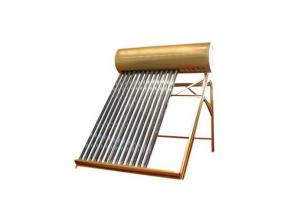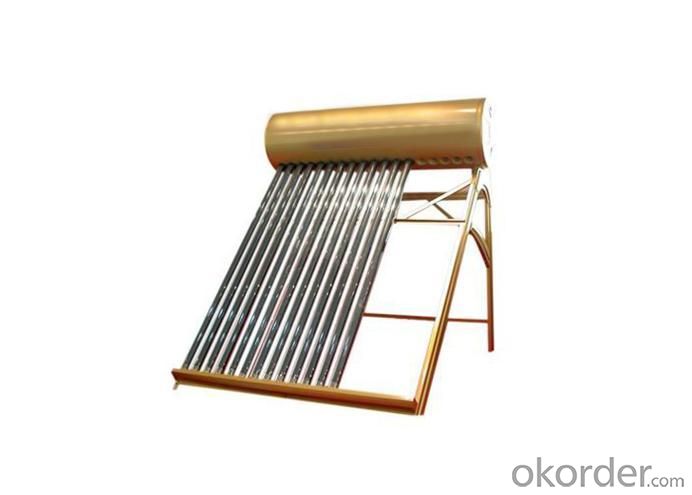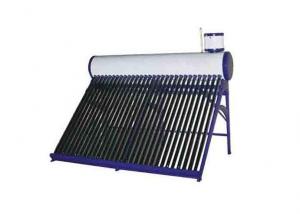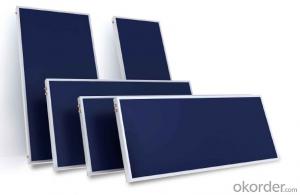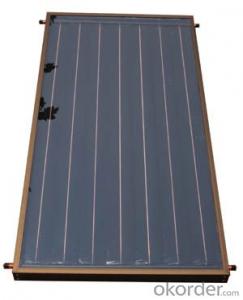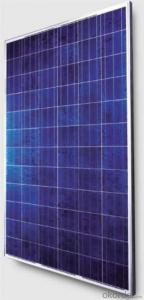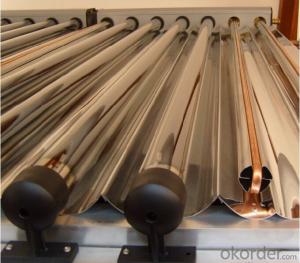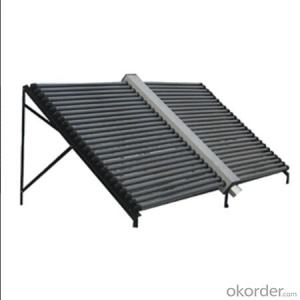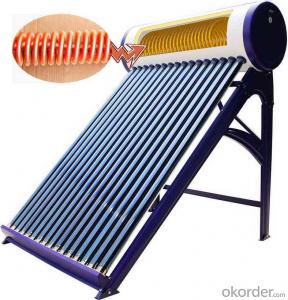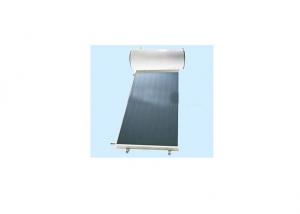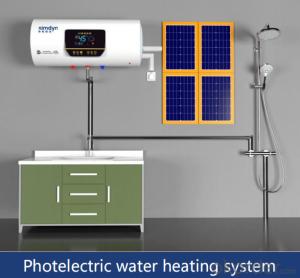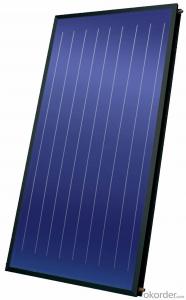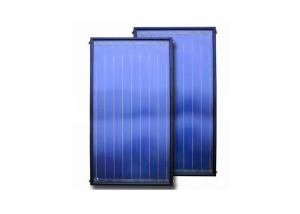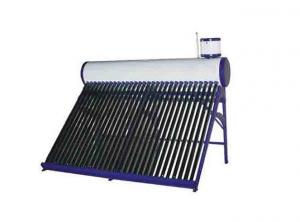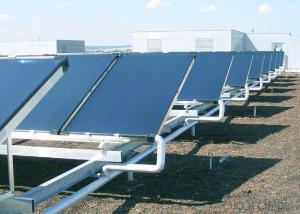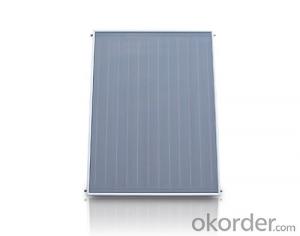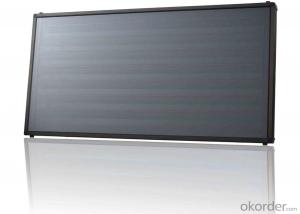Htp Solar Collectors Solar Energy Water Heater
- Loading Port:
- China Main Port
- Payment Terms:
- TT or LC
- Min Order Qty:
- 5 Sets set
- Supply Capability:
- 60,000 Sets per Year set/month
OKorder Service Pledge
OKorder Financial Service
You Might Also Like
solar energy water heater,solar heating system,vacuum tube solar water heater:for household,school,enterprise,government,swimmin
Specifications:
1) Tank
a) Outer Tank material: galvanized armor plate.
b) Inner Tank material: imported SUS304-2B food grade stainless steel.
c) Water Tank Diameter: Φ410/420/460/470/480/500/520mm.
d) Insulating layer: 55-60mm polyurethane foame.
e) Tank Capacity: 90/110/150/180/200/210/240/300/350L.
2) Vacuum tube
a) Dimension: Φ47*1500mm/Φ58*1800mm.
b) Material: high boron silicon 3.3 glass.
c) Qty: 16/18/20/24/30/36 pcs.
d) Hail resistance diameter: Φ25mm
e) Tube coating: by AL-N-AL or ALN/AIN-SS/CU.
3) Bracket
a) Material: color armor plate.
b) Thickness: 1.5mm.
c) Obliquity: from 38o to 45o .
4) Certificates: ISO9001:2000,CCC,CE
- Q: Can solar collectors be used for air conditioning?
- Yes, solar collectors can be used for air conditioning. Solar thermal collectors can be used to heat water, which can then be used in absorption or desiccant cooling systems to provide air conditioning. Additionally, solar photovoltaic panels can generate electricity to power air conditioning units directly.
- Q: Are there any limitations to the angle of installation for solar collectors?
- Yes, there are limitations to the angle of installation for solar collectors. The optimal angle for solar collectors depends on the latitude of the installation location and the time of year. In general, solar collectors should be installed at an angle that maximizes the amount of sunlight they receive throughout the year. In locations closer to the equator, where the sun is higher in the sky year-round, solar collectors are typically installed at a steeper angle, usually around 30 to 40 degrees. This allows for maximum solar radiation absorption throughout the day. In areas farther from the equator, where the sun's angle changes significantly throughout the year, solar collectors are often installed at a shallower angle. This helps to optimize solar energy absorption during the winter months when the sun is lower in the sky. However, there are limitations to the angle of installation. If the angle is too steep or too shallow, it can result in reduced energy production. Steeper angles may cause snow or debris to accumulate on the solar panels, hindering their efficiency. Shallower angles may result in less solar radiation absorption, especially during the winter months. Other factors that may limit the angle of installation include space constraints, structural limitations, and aesthetic considerations. In some cases, the angle of installation may need to be adjusted to accommodate these factors, even if it is not optimal for maximum energy production. Overall, while there are limitations to the angle of installation for solar collectors, careful consideration of the location, time of year, and other factors can help ensure maximum energy production and efficiency.
- Q: How long does it take to install a solar collector system?
- The installation time for a solar collector system can vary depending on several factors such as the size of the system, complexity of the installation, and the experience of the installation team. On average, a residential solar collector system can take anywhere from one to three days to install. However, larger commercial systems might take longer, sometimes up to a week or more. It is best to consult with a professional installer to get an accurate estimate based on your specific project requirements.
- Q: What is the effect of snow on solar collectors?
- The effect of snow on solar collectors is that it reduces or blocks the amount of sunlight reaching the surface of the collectors, thereby decreasing their efficiency in generating electricity or heat.
- Q: Can solar collectors be used in poverty alleviation programs?
- Yes, solar collectors can be used effectively in poverty alleviation programs. By harnessing the power of the sun, solar collectors provide renewable and sustainable energy solutions to impoverished communities. This helps in reducing their reliance on expensive and polluting fossil fuels, thereby lowering energy costs and improving living conditions. Solar collectors can power essential appliances like lighting, heating, and cooking, enabling access to clean energy and improving productivity. Additionally, solar energy can be used to establish micro-enterprises, such as solar-powered irrigation systems or charging stations, which create employment opportunities and stimulate economic growth in poverty-stricken areas. Overall, solar collectors have the potential to positively impact poverty alleviation efforts by providing affordable and environmentally friendly energy solutions.
- Q: What is the temperature range of a solar collector?
- The temperature range of a solar collector typically varies between 70 degrees Fahrenheit to 300 degrees Fahrenheit, depending on the type and design of the collector.
- Q: Can solar collectors be used for heating car washes and automotive service centers?
- Certainly, solar collectors have the capability to be utilized in heating car washes and automotive service centers. Solar collectors, which are also referred to as solar thermal systems, make use of sunlight to produce heat. These systems comprise of solar panels that absorb solar radiation and convert it into thermal energy. This thermal energy can be employed to heat either water or air, which can then be utilized for a variety of purposes, including the heating of car washes and automotive service centers. By installing solar collectors on the rooftop or in an open area near the car wash or service center, the thermal energy generated by the system can be harnessed to heat water for car washes or provide space heating for the service center. Consequently, this can significantly decrease the dependence on conventional heating systems that are powered by fossil fuels, thereby reducing both greenhouse gas emissions and operating costs. Solar collectors offer numerous advantages when it comes to heating car washes and automotive service centers. Firstly, they provide a source of energy that is renewable and sustainable, given the abundance of sunlight. Secondly, they offer long-term cost savings as the energy generated by the sun is free and reduces the reliance on costly fossil fuels. Moreover, solar collectors necessitate minimal maintenance, making them a dependable and low-maintenance solution for heating requirements. Furthermore, the incorporation of solar collectors into car washes and service centers can also enhance their environmentally friendly image and attract customers who prioritize sustainability. Additionally, in many regions, there are government incentives and subsidies available for the adoption of renewable energy technologies, further motivating the use of solar collectors for heating purposes. In conclusion, solar collectors can indeed be used effectively in heating car washes and automotive service centers. They provide a source of energy that is renewable and sustainable, reduce operating costs, and contribute to a greener and more environmentally friendly approach to heating.
- Q: Can solar collectors be used for heating car manufacturing plants and assembly lines?
- Yes, solar collectors can be used for heating car manufacturing plants and assembly lines. Solar thermal systems can provide a sustainable and cost-effective solution for industrial heating needs, including space heating and process heating in large facilities. By harnessing the sun's energy, solar collectors can generate heat which can then be used for various heating applications in car manufacturing plants and assembly lines.
- Q: Are solar collectors scalable for large-scale use?
- Yes, solar collectors are scalable for large-scale use. With advancements in technology and manufacturing processes, solar collectors can be easily implemented on a larger scale to meet the energy demands of large-scale applications. Additionally, the availability of vast areas of land and rooftops can accommodate the installation of numerous solar collectors, making it feasible for large-scale deployment.
- Q: Can solar collectors be used in solar thermal heating and cooling?
- Yes, solar collectors can be used in solar thermal heating and cooling systems. Solar thermal heating and cooling systems rely on harnessing the sun's energy to heat or cool a building or space. Solar collectors, such as flat plate collectors or evacuated tube collectors, are used to absorb solar radiation and convert it into heat. This heat can then be used for various applications, such as heating water for domestic use, space heating, or even powering absorption chillers for cooling purposes. By utilizing solar collectors, solar thermal heating and cooling systems can provide a sustainable and renewable source of energy for heating and cooling needs, reducing reliance on fossil fuels and contributing to a greener future.
1. Manufacturer Overview
| Location | Zhejiang,China |
| Year Established | 2005 |
| Annual Output Value | US$2.5 Million - US$5 Million |
| Main Markets | North America South America Eastern Europe Southeast Asia Africa Oceania Mid East Eastern Asia Western Europe Central America Northern Europe Southern Europe Domestic Market |
| Company Certifications | ISO9001:2008;ISO14001:2004 |
2. Manufacturer Certificates
| a) Certification Name | |
| Range | |
| Reference | |
| Validity Period |
3. Manufacturer Capability
| a) Trade Capacity | |
| Nearest Port | Shanghai,Hangzhou |
| Export Percentage | 41% - 50% |
| No.of Employees in Trade Department | 6-10 People |
| Language Spoken: | English, Chinese |
| b) Factory Information | |
| Factory Size: | 5,000-10,000 square meters |
| No. of Production Lines | 5 |
| Contract Manufacturing | OEM Service Offered Design Service Offered Buyer Label Offered |
| Product Price Range | Average |
Send your message to us
Htp Solar Collectors Solar Energy Water Heater
- Loading Port:
- China Main Port
- Payment Terms:
- TT or LC
- Min Order Qty:
- 5 Sets set
- Supply Capability:
- 60,000 Sets per Year set/month
OKorder Service Pledge
OKorder Financial Service
Similar products
Hot products
Hot Searches
Related keywords
